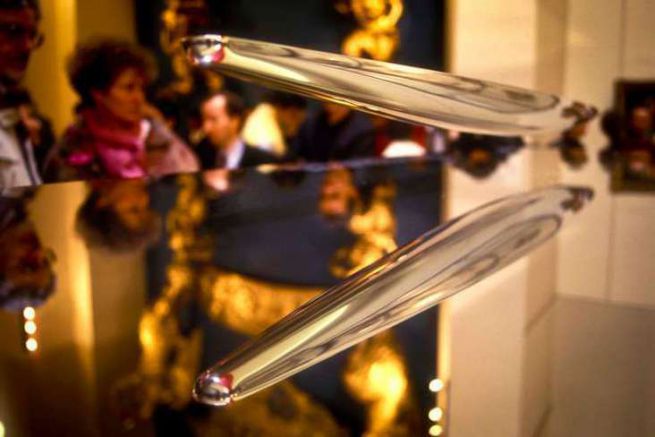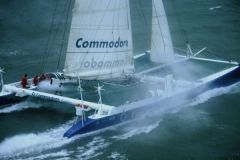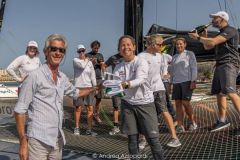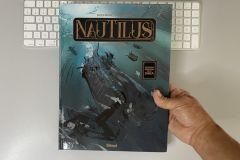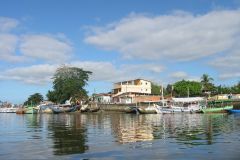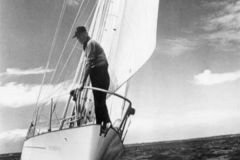First, let's make way for Jules...
"Le Tour du monde en 80 jours", a classic novel of anticipation, was published in 1872 by the prolific author Jules Verne. It tells the story of the elegant Englishman Philéas Fogg, who wanted to prove that technological progress in the field of transport now makes it possible to travel around the world in such a short time! Of course, the boat holds a special place in this adventure. And Jules Verne, who was also a real navigator, did not just mention these maritime crossings experienced by his hero! In this first part of the exhibition, you will discover the origin of the current Jules Verne Trophy.
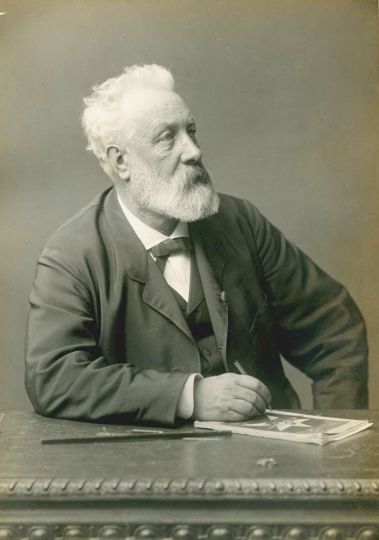
A little history...
A few steps, and here you are at the very beginning of this mythical challenge which seemed, to some sailors, finally achievable in view of the technical evolution of racing boats. Yves Le Cornec had the idea in 1985. Florence Arthaud and Titouan Lamazou co-founded it in 1992, with the advice of other sailors as well. This Trophy is created by sailors for other intrepid sailors... A real sailors' story!
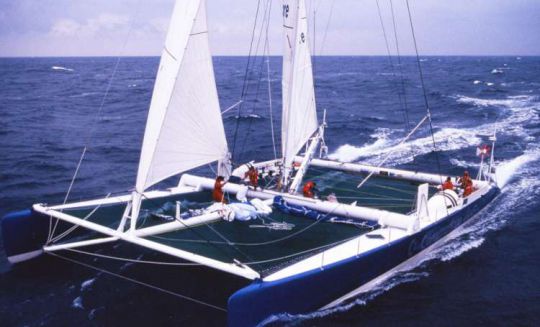
Rules... not too many are needed!
In the exhibition, the historical context of the creation of this race against the clock, its specificities, its rules, etc. are explained. From east to west with a departure and arrival at the level of the island of Ushant, without assistance, without stopover, without size or crew limit, only under sail... as quickly as possible. These are the main constraints imposed on those who want to travel 21,760 nautical miles, or 40,300 km, around the globe! The Trophy is awarded to those who improve on the previous time.

Such a beautiful trophy!
So much effort can only be rewarded by an extraordinary trophy. You can admire it at the heart of the exhibition. This amazing and great work of art was created in 1992 by the American artist Thomas Shannon. Not just anyhow, since everything is calculated: this very refined sailboat hull displays symbolic dimensions corresponding to the diameter of the Earth, the Moon, the Sun... all elements that influence maritime navigation! It also integrates human measures: a man's span with both arms extended, and the height of the same man. Made of polished cast aluminium, the hull seems to float in the air, thanks to a well-designed magnetic field.

Victories!
Below the hull, on the base, were affixed the names of those who have already taken up the challenge: Bruno Peyron three times, Peter Blake, Robin Knox-Johnston, Olivier de Kersauson twice, Franck Cammas, Loïck Peyron... and Francis Joyon. All around, you will discover some 150 objects and documents related to this epic: models, manuscripts of Jules Verne, paintings, drawings, sailors' clothing, objects of life on board, materials, archive images...
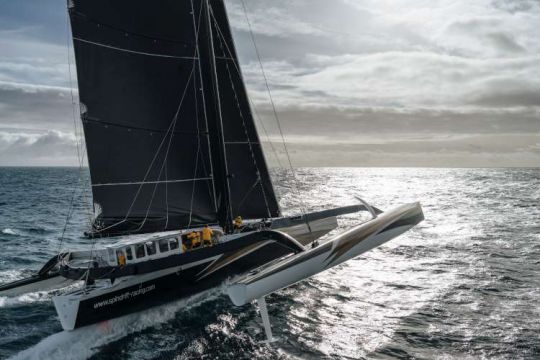
The other towers...
It's impossible to be navel-gazing when it comes to round-the-world travel! This is why this exhibition also presents the other great figures of the conquest of the world, such as Magellan, whose expedition completed, in 1522, the very first circumnavigation of the Earth. Portraits, models, giant planisphere... evoke this human epic for five centuries! Part of the exhibition is logically devoted to the logistics of these unique trips: design, construction, ship preparation, and daily life at sea on board with outfits, equipment, interior design...
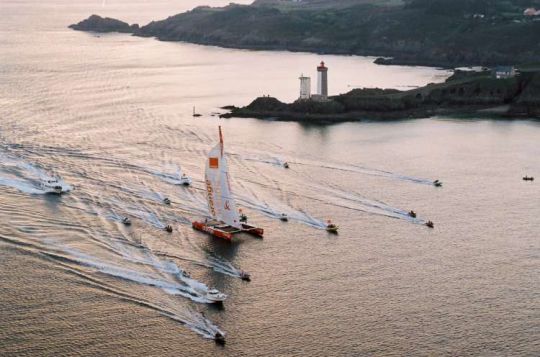
Honour to the crews
They are therefore nine crews to have, for the moment, broken the record in place... From Bruno Peyron's 79 days to the current record set in 2017 with 40 days for Francis Joyon's crew! But 18 other attempts have been made since 1992. The exhibition thus presents you all those who have competed against the oceans to try to win this trophy. It also addresses the theme of communication concerning this extraordinary event towards the general public: it is the way it is conceived and conducted that makes the Jules Verne Trophy, an operation as exciting for the general public as for sailors.
In a quarter of a century, the time needed to meet this round-the-world challenge has been halved! What will happen in another quarter century? The end of the exhibition projects you into the future...

"Jules Verne Trophy, the extraordinary record"
